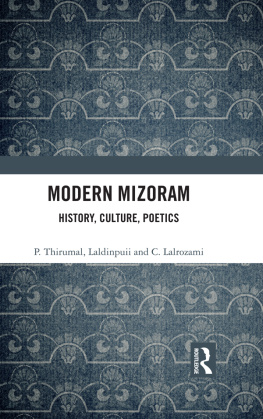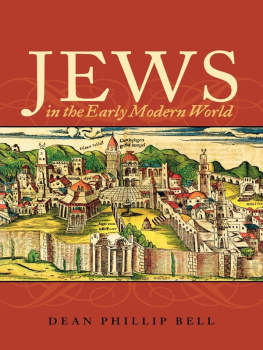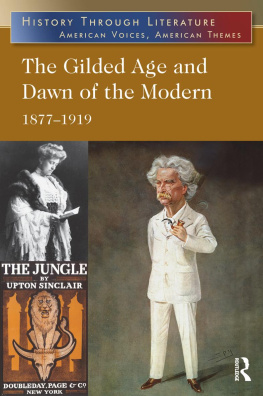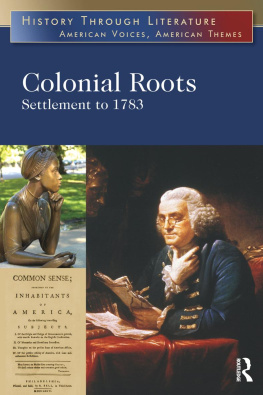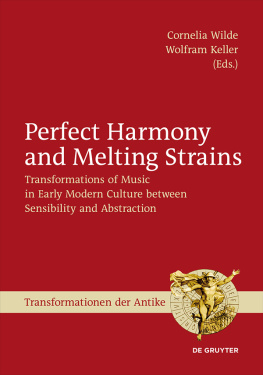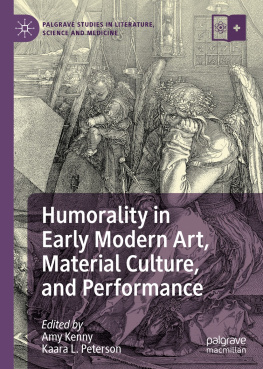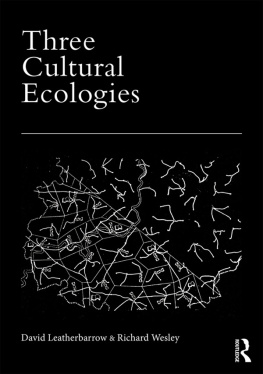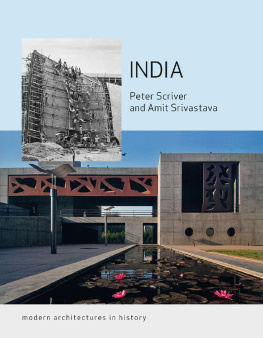This book is a study of the life of colonial and contemporary Mizo culture. There are so many people who contributed perceptibly and imperceptibly to the making of this work. Several versions of the manuscript were read and critically commented upon by colleagues and friends. Sasheej, Srivats, Shilpa, Dickens and Narmada require special mention. We think their comments have enlivened the chapters and helped it to acquire intellectual weight and moral aesthetic direction. We have been extremely lucky to have met several important Mizo academics, intellectuals and critics who were generous with their time and shared the deep insights of their land and culture. We would like to make special mention of Lalthangfala Sailo, Lalthangliana, R. L. Thanmawia, Rev. Lawmsanga, Rev. Vanlalchhuanawma, C. Lalkhawliana, Margaret Zama, Laltuangliana Khiangte and Lalrinawmi. Our friend Lalringliana was most hospitable whenever we visited Aizawl. James Khamliansawm, the young artist whose work is the basis for the writing of the last chapter, was extremely gracious to share his artistic and political concerns. To those friends and near ones like Raghuram Raju, Manju, Christy, Shruthi Bala, Amma, Anu, Ratna Mala and innumerable others, who have constantly urged and encouraged us to bring forth this volume, we owe our work in the deepest sense possible. We were lucky to have friends like Sharmila, Jenson, Ranjit and Harini who accompanied us on our various field trips to Mizoram and helped us with our work. We received editorial support from Chitralekha, Prabha Zachariah, Shiv Trishul, Himabindu and Jampa; it was wonderful working with them. Special thanks to Mikey for her conscientious absorption in our work and providing such endearing warmth.
We presented drafts of these chapters at various places including University of Tubingen, IIT Mumbai, University of Hyderabad and at Anveshi. We acknowledge the assistance given to us by institutions such as the Synod Archive, Aizawl, Mizoram State Archive, Aizawl Theological College, Mizoram University and United Theological College, Bengaluru. We are thankful to Routledge for publishing this volume. We thank Dilip Menon and Sunil Kumar from IESHR for granting us permission to republish another version of our piece which originally appeared in that journal.
The book has taken a sufficiently long time for its arrival. In a way, we think that we witnessed the making of its own time, a time of Modern Mizoram: History, Culture, Poetics.
First published 2019
by Routledge
2 Park Square, Milton Park, Abingdon, Oxon OX14 4RN
and by Routledge
711 Third Avenue, New York, NY 10017
Routledge is an imprint of the Taylor & Francis Group, an informa business
2019 P. Thirumal, Laldinpuii and C. Lalrozami
The right of P. Thirumal, Laldinpuii and C. Lalrozami to be identified as authors of this work has been asserted by them in accordance with sections 77 and 78 of the Copyright, Designs and Patents Act 1988.
All rights reserved. No part of this book may be reprinted or reproduced or utilised in any form or by any electronic, mechanical, or other means, now known or hereafter invented, including photocopying and recording, or in any information storage or retrieval system, without permission in writing from the publishers.
Trademark notice: Product or corporate names may be trademarks or registered trademarks, and are used only for identification and explanation without intent to infringe.
British Library Cataloguing-in-Publication Data
A catalogue record for this book is available from the British Library
Library of Congress Cataloging-in-Publication Data
A catalog record for this book has been requested
ISBN: 978-1-138-55963-9 (hbk)
ISBN: 978-0-429-44799-0 (ebk)
Typeset in Sabon
by Apex CoVantage, LLC
Contents
Guide
Baruah, S. (1999). India against Itself . University of Pennsylvania Press.
Bernstein, B. (1964). Elaborated and Restricted Codes: Their Social Origins and Some Consequences. American Anthropologist , (6).
Bhatia, L. (2010). Contradiction and Change in the Mizo Church. In R. Robinson & J. M. Kujur (Eds.), Margins of Faith: Dalit and Tribal Christianity in India (p. 171). Sage India.
Chakrabarty, D. (2000). Provincializing Europe: Post-Colonial Thought and Historical Difference . Princeton, NJ: Princeton University Press.
Chamber, O. A. (1889). Handbook of the Lushai Country . Calcutta: Supt. of Govt. Printing.
Chatterjee, I. (2002). Genealogy, History and the Law: The Case of the Rajamala. In P. Chatterjee & A. Ghosh (Eds.), History and the Present . New Delhi: Permanent Black.
Chatterjee, I. (2008). Captives of Enchantment? Gender, Genre, and Transmemoration. In R. Aquil & P. Chatterjee (Eds.), History in the Vernacular . New Delhi: Permanent Black.
Chatterjee, I. (n.d.). Slaves, Souls and Subjects in a South Asian Borderland . Retrieved from http://agrarianstudies.macmillan.yale.edu/sites/default/files/files/colloqpapers/02chatterjee.pdf
Chatterjee, P. (1986). Nationalist Thought and the Colonial World: A Derivative Discourse . London: Zed Books.
Chatterjee, P. (1993a). Nationalist Thought and the Colonial World: A Derivative Discourse . Minneapolis: University of Minnesota Press; Second Impression edition.
Chatterjee, P. (1993b). The Nation and Its Fragments: Colonial and Postcolonial Histories . Princeton, NJ: Princeton University Press.
Chatterjee, S. (1990). Mizoram Encyclopedia . New Delhi: Jaico Publishing House.
Chatterjee, S. (1995). Mizo Chiefs and the Chiefdom . New Delhi: MD Publication.
Dev, B. J. & Lahiri, D. K. (1983). Lushai Customs and Ceremonies . New Delhi: Mittal Publication.
Downs, F. S. (1992). History of Christianity in India: North East India in 19th and 20th Century . Bangalore: Church History of India.
Foucault, M. (1997). Technologies of Self. In P. Rabinow (Ed.), Ethics: Subjectivity and Truth . New York: The New Press.
Foucault, M. (2010). The Archaeology of Knowledge . New York: Vintage.
Fraser, B. G. & Fraser, D. W. (2012). Thangchhuah Puan: The Highest Status Mantle among the Mizo People of North-Eastern India. In Textiles and Politics: Textile Society of America 13th Biennial Symposium Proceedings . Washington, DC. https://digitalcommons.unl.edu/cgi/viewcontent.cgi?article=1682&context=tsaconf
Gadamer, H.-G. (2013). Truth and Method . London: Bloomsbury.
Gondrin, J. (2001). Play, Festival, and Ritual in Gadamer: On the Theme of the Immemorial in His Later Works. In L. K. Schmidt (Ed.), Language and Linguisticality in Gadamers Hermeneutics (pp. 4350). Lanham, MD: Lexington Books.
Heath, J. (2012). LengkhawmZai: A Singing Tradition of Mizo Christianity in Northeast India . Durham: Durham University.
Heidegger, M. (1971). Poetry, Language, Thought . New York: Harper and Row.
Hluna, J. V. (1992). Education and Missionaries in Mizoram . Spectrum Publication.
Hrangthiauva & Lalchungnunga. (1978). Mizo Chanchin . Aizawl: C. Chhuanvawra.
Johnson, C. (2008). Derrida and Technology. In R. Eaglestone & Simon Glendinning (Eds.), Derridas Legacies: Literature and Philosophy . Abingdon, UK: Routledge.
Kar, B. (2008). Incredible Stories in the Time of Credible Histories: Colonial Assam and Translations of Vernacular Geographies. In R. Aquil & P. Chat-terjee (Eds.), History in the Vernacular . New Delhi: Permanent Black.
Kar, B. (2009). When Was Post-Colonial? A History of Policing Impossible Lines. In S. Baruah (Ed.), Beyond Counter Insurgency: Breaking the Impasse in the Northeast India (pp. 4977). New Delhi: Oxford University Press.

